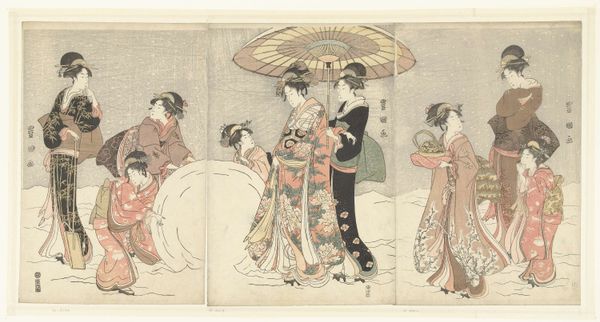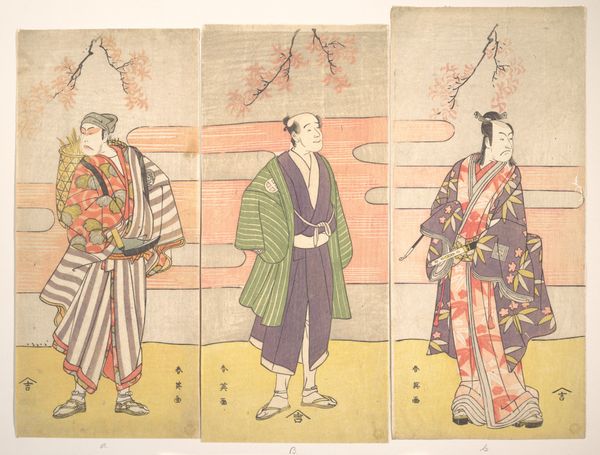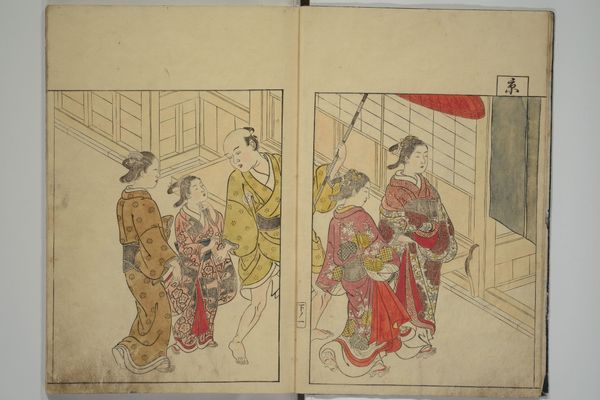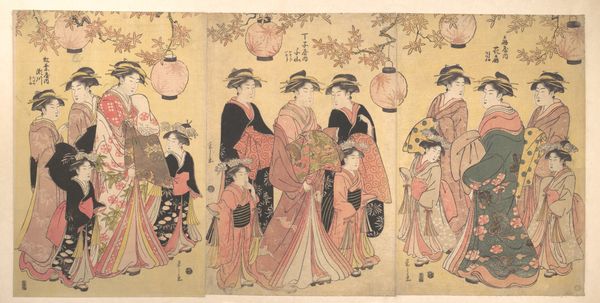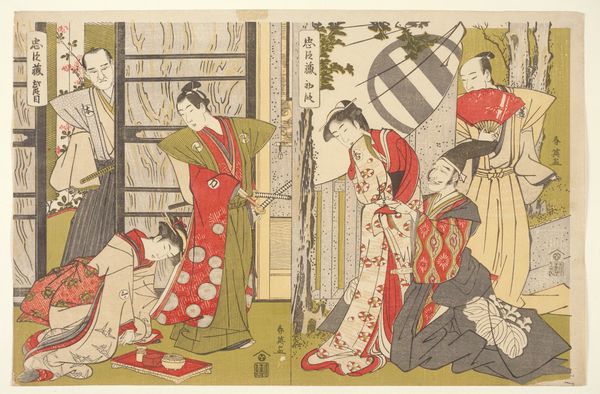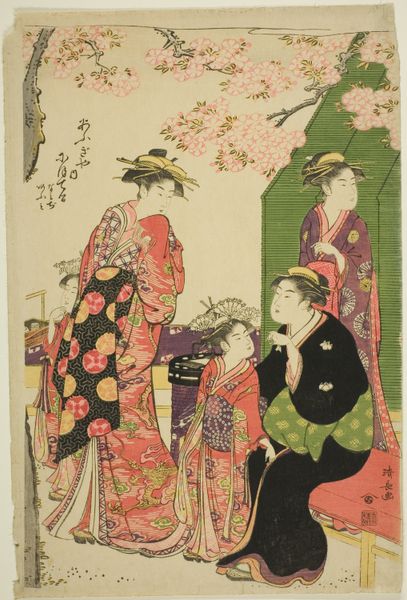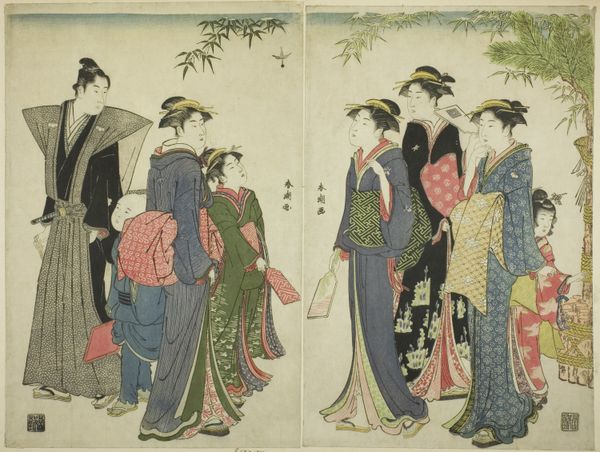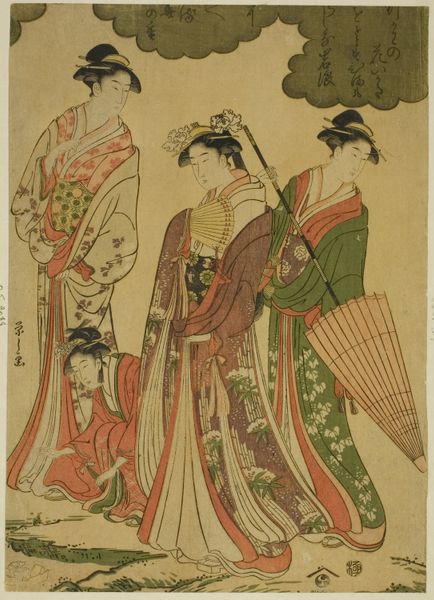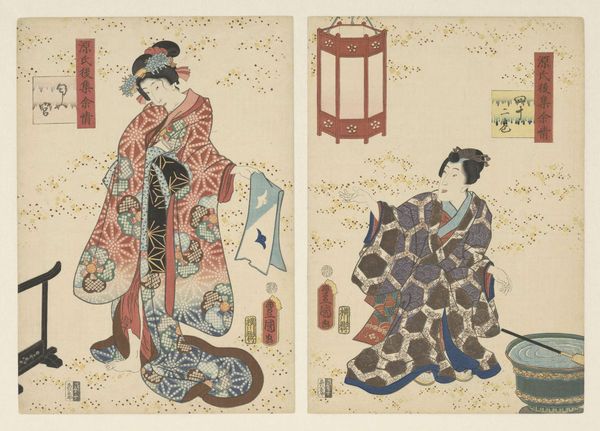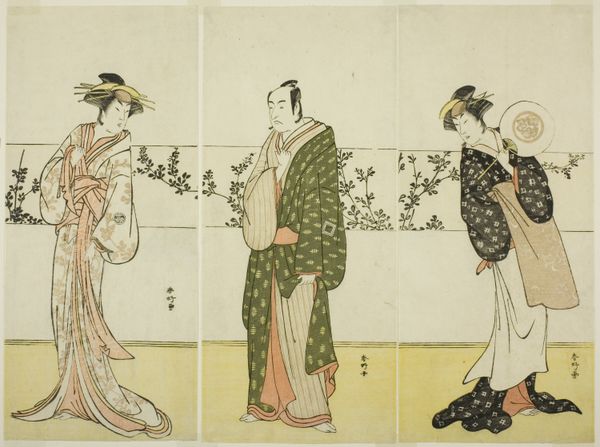
Eleven Actors Celebrating the Festival of the Shrine of the Soga Brothers 1788
0:00
0:00
#
narrative-art
# print
#
asian-art
#
landscape
#
ukiyo-e
#
figuration
#
genre-painting
Dimensions: 31.8 × 71.0 cm (total); 31.1 × 13.8 cm (first sheet from the right), 31.8 × 14.6 cm (second sheet from the right), 31.4 × 14.5 cm (third sheet from the right), 31.5 × 14.3 cm (fourth sheet from the right); 31.4 × 13.8 cm (fifth sheet from the right) 31.8 × 71.0 cm
Copyright: Public Domain
Editor: Here we have Torii Kiyonaga’s "Eleven Actors Celebrating the Festival of the Shrine of the Soga Brothers," from 1788, a Japanese woodblock print. I’m immediately drawn to the elegant lines of the figures and the subtle color palette. How do you approach a piece like this? Curator: Primarily through its visual elements. Notice how Kiyonaga divides the composition into distinct panels. How does this segmentation influence your reading of the overall work? Editor: Well, each panel seems to contain its own little scene or grouping, but they're linked by the overall subject matter, the festival. It feels very ordered. Curator: Precisely. Now, let's examine the use of line. Kiyonaga's lines are incredibly graceful and refined, almost like calligraphy. Observe the contours of the actors' robes and their facial features. How does the emphasis on line contribute to the overall aesthetic? Editor: It definitely creates a sense of sophistication and refinement. The delicate lines give a sense of idealized beauty to each figure and elevate it above a literal scene. Curator: Exactly. Also, think about the function of the empty space within the prints. How does this interplay between positive and negative space create depth and visual interest? The organization highlights how art can be divorced from specific events, using the subject simply as a tool. Editor: It seems the empty space focuses the eye, creating harmony, but in each viewing pane of the work, the arrangement remains rigid in form. So while narrative it could be said to suggest at is is secondary. Curator: A keen observation. Ultimately, Kiyonaga's genius lies in his capacity to unite linear grace, controlled composition, and delicate color into a harmoniously ordered whole. Editor: I'm starting to see how much information can be gathered by focusing on form and arrangement alone, not only about Ukiyo-e as art object but how line can take precedence over the narrative it might show.
Comments
No comments
Be the first to comment and join the conversation on the ultimate creative platform.


